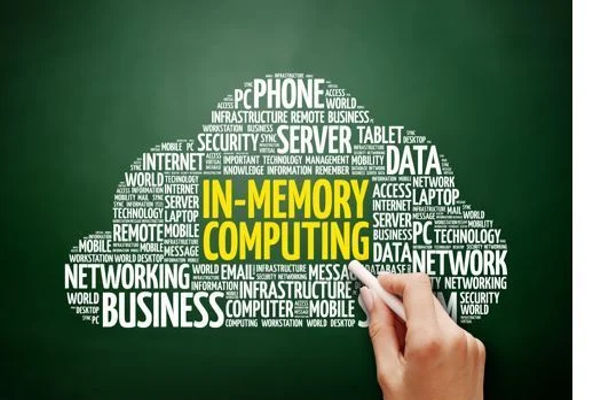The exceptional growth of applications requiring extensive data, such as artificial intelligence (AI), machine learning (ML), and real-time analytics, has created loopholes in the traditional computing infrastructures. There is a significant bottleneck caused by the transfer of data, to and fro, in between the processor and memory, known as the von Neumann architecture, suffering from a “memory wall”. This data transfer and collection process not only increases latency but also escalates energy consumption, affecting the overall performance and efficiency.
In-memory computing (IMC) transforms this issue by integrating processing capabilities directly into the memory units. This is done by computing data right at its origin, significantly reducing data transfer, resulting in improved speed and energy efficiency.
Let’s dive into the principles of In-memory computing, its advantages, applications, and its potential to revolutionize the future of computing.
What Is In-Memory Computing?
A revolutionary shift from traditional computing models by embedding computational functions within memory arrays is called in-memory computing. This technology enables the processing of data directly in the memory, bypassing the need for transferring data to a separate data processing unit. This has resulted in a gradual decrease in latency and energy consumption.
The in-memory computing ICs are specialized chips that can be incorporated into a variety of memory technologies, like static random-access memory (SRAM), dynamic random-access memory (DRAM), and emerging non-volatile memories like resistive RAM (ReRAM) and phase-change memory (PCM). These advanced technologies make complex operations easy, like matrix multiplication and logical operations inside the memory itself, paving the way for efficient computing infrastructures.
Advantages of In-Memory Computing ICs
In-memory computing ICs are transforming how data is processed by computing data directly in the memory units themselves. This is advantageous to reduce the latency of this setup. Since the data doesn’t need to be moved from memory to the processor and back again to the memory, operations are much faster. This design efficiently lowers energy consumption, saving power in especially where the battery is the main energy source.
It is easier to perform complex tasks with less energy consumption than traditional systems. It also enables faster data throughput as numerous computations can be done in parallel within the memory, allowing more data processing in less time.
Additionally, a simpler architecture is created by merging memory and processing in one single place, reducing the size of devices and processing costs. These advantages make IMC ICs a strong contender in the modern, high-speed computing applications.
Applications of In-Memory Computing ICs
One of the pivotal applications of IMC ICs is in artificial intelligence (AI), used for image recognition, voice processing, and detecting languages, which require large data operations. The IMC chips reduce power utilization, making them ideal for integration into mobile and embedded AI.
Additionally, these integrated circuits are also employed in autonomous vehicles, processing camera and sensor data for enhanced safety and responsiveness.
In edge computing applications, notably in IoT devices, these ICs make informed decisions wherever necessary without constant cloud communication, in turn, reducing latency.
Data centers, too, have wide applicability of IMC ICs, where these systems enhance real-time data by speeding up database anomalies and memory-based tasks.
Varied applications like medical diagnostics in the healthcare domain require these chips to compute with memory databases, making them a breakthrough tool for modern, data-intensive applications.
Future Outlook
The future holds immense space for innovation in in-memory computing ICs, with ongoing research and development activities to overcome current setbacks. Developments spanning from more reliable computing to enhancing the viability of IMCs have guided the progress of this technology. Further, collaborations with industry tech minds and academia promise significant growth in standardizing frameworks and design strategies. With increased efforts, the future of in-memory computing is poised to enhance the current computing infrastructure.
Conclusion
In-memory computing ICs have transformed the idea of how we approach computing techniques, bridging the gap between conventional and modern data processing models. This cutting-edge technology has boosted the data storage and processing methods, significantly reducing power usage. These IC chips have proved to be beneficial for a broad spectrum of applications spanning various domains, like artificial intelligence, automation, healthcare, and edge computing. These ICs have paved the way from moving hefty data and processing towards processing data inside the memory component itself, hence the name. The future of computing is promising since advancements in integrated circuits present a foundational building block for next-gen computing, giving rise to smarter devices and boosting sustainability into digital architecture.













